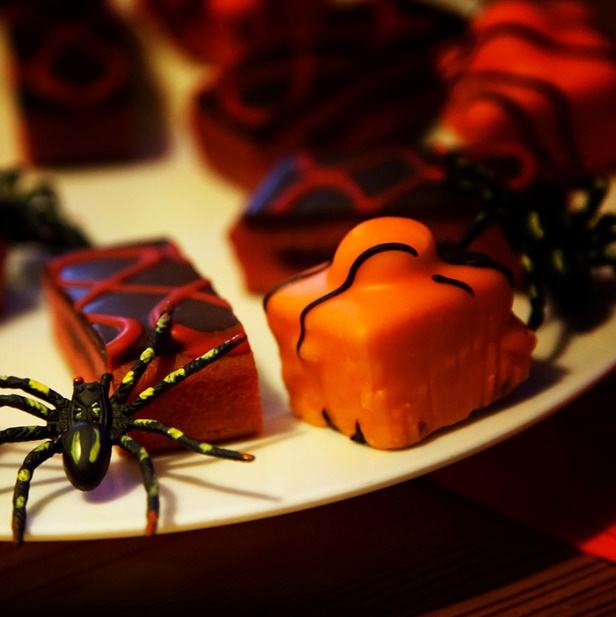Halloween, Candy and YOUR BRACES
WE ALL LOVE EATING our favorite candy from time to time, especially around Halloween. But those treats can get tricky for orthodontic patients, because many of the standard goodies are harmful to braces. So how can you safely enjoy your spooky night of fun and sweets? Just follow our guidelines of what to aim for and what to avoid in the trick-or-treat bowls around your neighborhood.

Braces-Friendly Halloween Treats
The good news is that chocolate is safe! Any type of soft chocolate, from a bar to a peanut butter cup, is perfectly fine to eat with braces. But soft is the keyword there. Hard or large pieces of chocolate could still pose a danger to orthodontic equipment, and you should avoid chocolate with hard pieces of toffee embedded in it.
Cookies and brownies are another safe option for braces-wearers, so make sure you pay a visit to the house that always hands out baked goods this year! Again, softness is key. If someone gives you a hard cookie, give it a good long soak in cold milk before biting into it.
While whole caramel apples are firmly on the banned list, you can take that caramel apple home and chop it into slices. After that, it won’t pose a threat to your braces. Even better, apples are much healthier for your teeth than all that candy, so you can enjoy something both delicious and good for you!
Hard candies are okay, but there’s a catch: no chewing allowed. If you have the patience to be able to suck on it until it dissolves, a hard candy is safe. However, just because they’re safe for braces doesn’t make them great for your teeth, so we still recommend sticking to the other options.
Treats To Trade To Your No-Braces Friends
No matter how much you love them, there are some treats and candies that are definitely off-limits if you have braces. Anything hard, gummy, chewy, or sticky can put brackets and wires at risk. That means no taffy, gummies, caramels, toffee, popcorn, jelly beans, Tootsie Rolls, or Starbursts, and absolutely no gum. Any of these can pop or pull a bracket right off a tooth. It’s also important to avoid candies like M&Ms or Skittles, because their small size makes it easy for them to get into the wrong place and pop a bracket loose.
Check out this video for a reminder about banned foods and why to avoid them:
https://www.youtube.com/watch?v=Do1VCqfiLgo
If you do end up with a bag full of banned treats, just trade those away to a friend or sibling without braces until your Halloween haul is all orthodontist-approved!
Don’t Forget To Clean Your Teeth!
The most important thing to remember after your night of fun and tasty treats is to take care of your teeth and your braces, because many of the treats that are safe to eat can still lead to tooth decay without proper attention to dental hygiene. So make sure to brush and floss away all traces of that sugary deliciousness. We’ll be checking the next time we see you that you’ve been keeping up with your braces cleaning routine!
Keep making wise choices to keep your braces safe!

